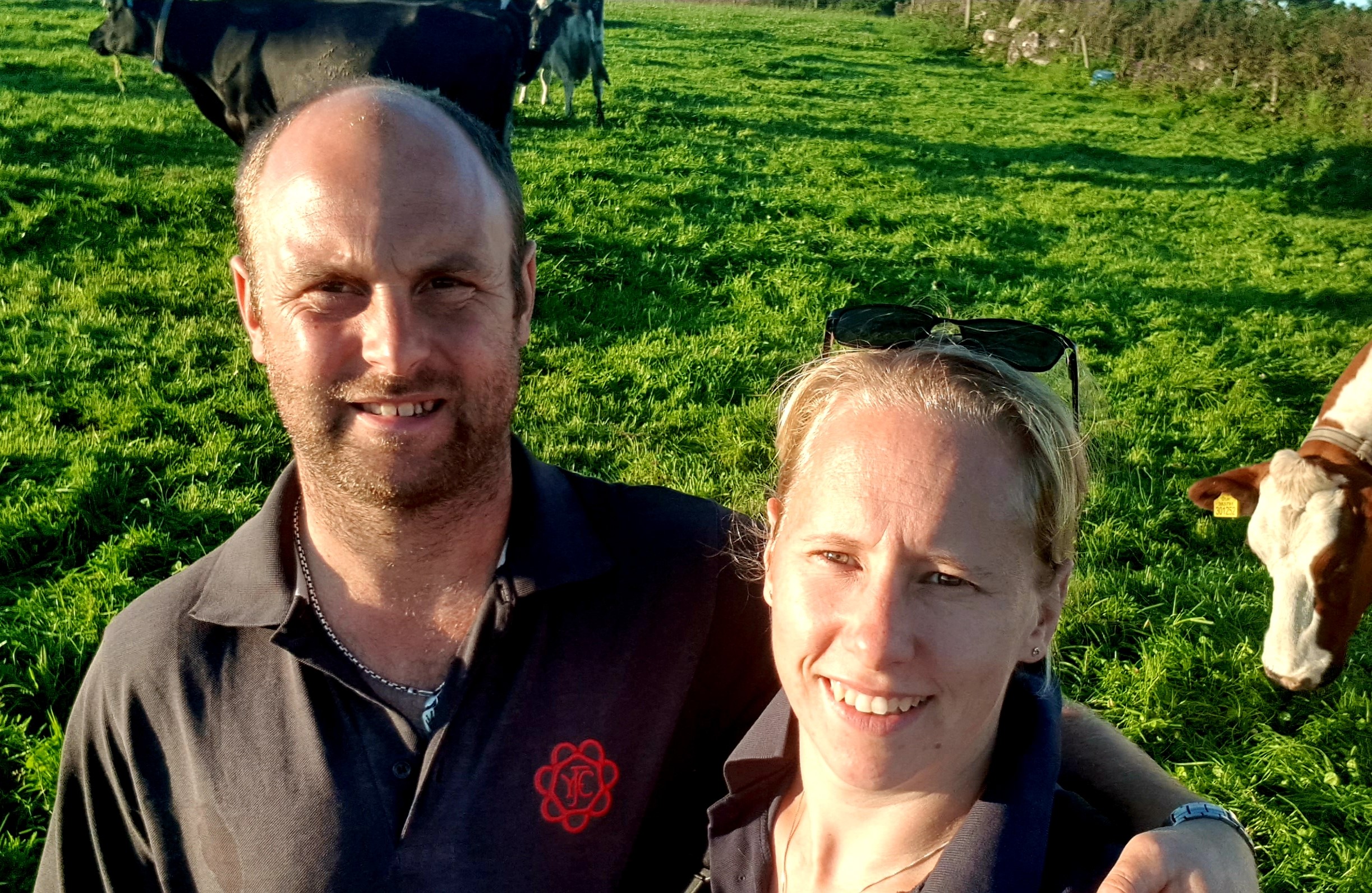The Holstein, Friesian and Norwegian Red crosses, have been bred specifically for the autumn calving grazing system at Adam and Georgina Robert’s farm near Penzance, in Cornwall.
“Good and effective grazers are crucial for us,” says Georgina, who farms the 222ha unit with her husband Adam and Adam’s parents, plus an apprentice. The grazing platform accounts for 42ha, and the rest is beef, silage area and assigned to the higher level stewardship scheme. “We look for cows to be out for 10 months of the year, so they need to graze whatever the weather.”
At the same time, they want to maintain high milk constituents without losing feed response and yield capability. The herd is currently averaging 7,070kg of milk at 4.20% fat and 3.55% protein on twice-a-day milking and 546kg of solids. Approximately 50% of milk is produced from forage, mainly grazed grass with whole crop barley and concentrate.
The herd moved away from pure black and whites in favour of cross breeding back in 2012 and having experienced “the added value gained from cross breeding in yield, fertility and health”, Adam says he is now a huge “advocate of the mix.”
For a farm that is only in their 3rd year of block calving, they have had exceptional success in achieving their current six week in calf rate of 81%. Using 100% Sexed semen they have also achieved a 58% conception rate using both REDX and Sexcel sexed semen. “We aim to keep improving fertility and to take advantage of the high fertility traits of the breeds, particularly in the Norwegian Red,” adds Georgina.
However, Fertility isn’t their only breeding goal. “We want strong, healthy cows with strong feet, healthy udders with a low average cell count” says Georgina. “We have always been a fairly healthy herd but lameness rates, that are currently two cases per 100 cows, have come down as we have crossbred. The crossbred cows also appear more resilient to mastitis, which I believe is down to stronger and healthier cows, but again a lot of possible variables.”




